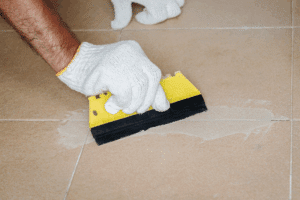If you’ve ever remodeled your bathroom or kitchen, you know the tiles get most of the attention, but grout can make or break the final look. Learning how to pick grout color is just as important as choosing the tile itself. Many homeowners in Birmingham struggle with whether to match grout for a seamless finish, contrast it for a bold design, or find a shade that balances both. The wrong choice can leave your space looking dated or unfinished, while the right one can tie the whole room together beautifully.
In this guide, we’ll walk through practical tips on how to make the best grout color decision for your home.
Why Grout Color Matters in Home Design
Grout does more than hold tiles in place; it influences the overall style and mood of the room. A light grout can make a room feel open, airy, and clean, while a darker grout can add depth and drama. Beyond aesthetics, the right grout color can also help mask stains, dirt, or wear over time, which is an important factor in busy Birmingham households.
Choosing wisely means balancing both beauty and practicality.

How to Pick the Right Grout Color
Matching or Contrasting?
When considering how to select a grout color, the first decision is whether you want your grout to blend in or stand out. Both options create a distinctly different effect, so consider your style and the desired mood for the space.
- Matching grout: Creates a smooth, seamless look that keeps the focus on the tile itself. This is ideal for modern, minimalist, or clean designs where uniformity matters. It’s a subtle choice that makes a room feel open and uncluttered.
- Contrasting grout: Highlights the edges of each tile and adds definition to the design. This works well in patterned floors, backsplashes, or bold kitchens where you want character and visual impact. It can make your tile design feel more dynamic and intentional.
Consider Tile Size and Shape
Tile dimensions and layout influence how grout will look once installed. The size and shape of your tiles determine whether grout lines should be noticeable or subtle.
- Small tiles: Pair better with subtle grout since too much contrast can create a busy, overwhelming effect. A close match makes the surface look cleaner and more continuous.
- Large tiles: Can handle bold grout colors because there are fewer seams. This gives you room to be creative with color choices without cluttering the design.
Think About the Room Style
Every room has its own atmosphere, and grout color plays a role in either enhancing or disrupting it. Matching your grout to the style of the room helps create a cohesive look that feels intentional.
- Farmhouse kitchens: Light or classic grout shades usually work best. They maintain a warm, homey feel and blend well with rustic or traditional finishes.
- Modern bathrooms: Dark or colored grout adds depth and drama. It can make tiles stand out and give the space a sleek, contemporary feel.
Factor in Maintenance
Grout color isn’t just about looks it also impacts cleaning and long-term upkeep. Think about how much use the room gets and how much maintenance you’re willing to commit to.
- Light grout: Brightens and opens up a space but tends to show stains, dirt, and discoloration more easily. It works best in low-traffic areas or where you’re comfortable with more frequent cleaning.
- Dark grout: Hides dirt, stains, and daily wear, making it a low-maintenance option. It’s practical for kitchens, entryways, and bathrooms that see heavy use.
Test Before You Decide
Don’t rely on imagination alone; grout colors can look very different once installed. Testing before you decide helps you avoid regrets later.
- Place grout samples next to your tiles and check them in both natural daylight and indoor lighting.
- View the samples at different times of the day to see how the color shifts. This step ensures the grout will complement your tiles in all conditions.
Get Professional Advice
If you’re still unsure about how to pick grout color, seeking expert advice can save you time and stress. Professionals often bring sample boards and real grout examples so you can compare them directly with your tiles. They also know which grout colors and types hold up best in Birmingham’s climate, giving you confidence in both design and durability.
Conclusion
Choosing the right grout color may seem like a small detail, but it makes a big difference in the overall look and feel of your home. By considering whether you want your grout to match or contrast, factoring in tile size, room style, and maintenance needs, and testing samples in real light, you’ll make a choice you’ll feel confident about.
And if you’re still unsure, don’t hesitate to ask a professional for guidance; sometimes, an expert eye is all you need to bring your vision together.

